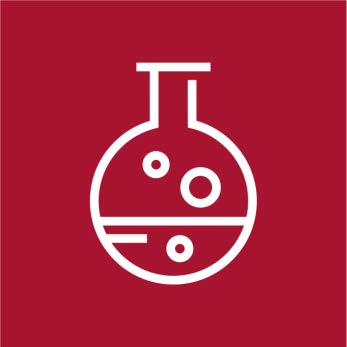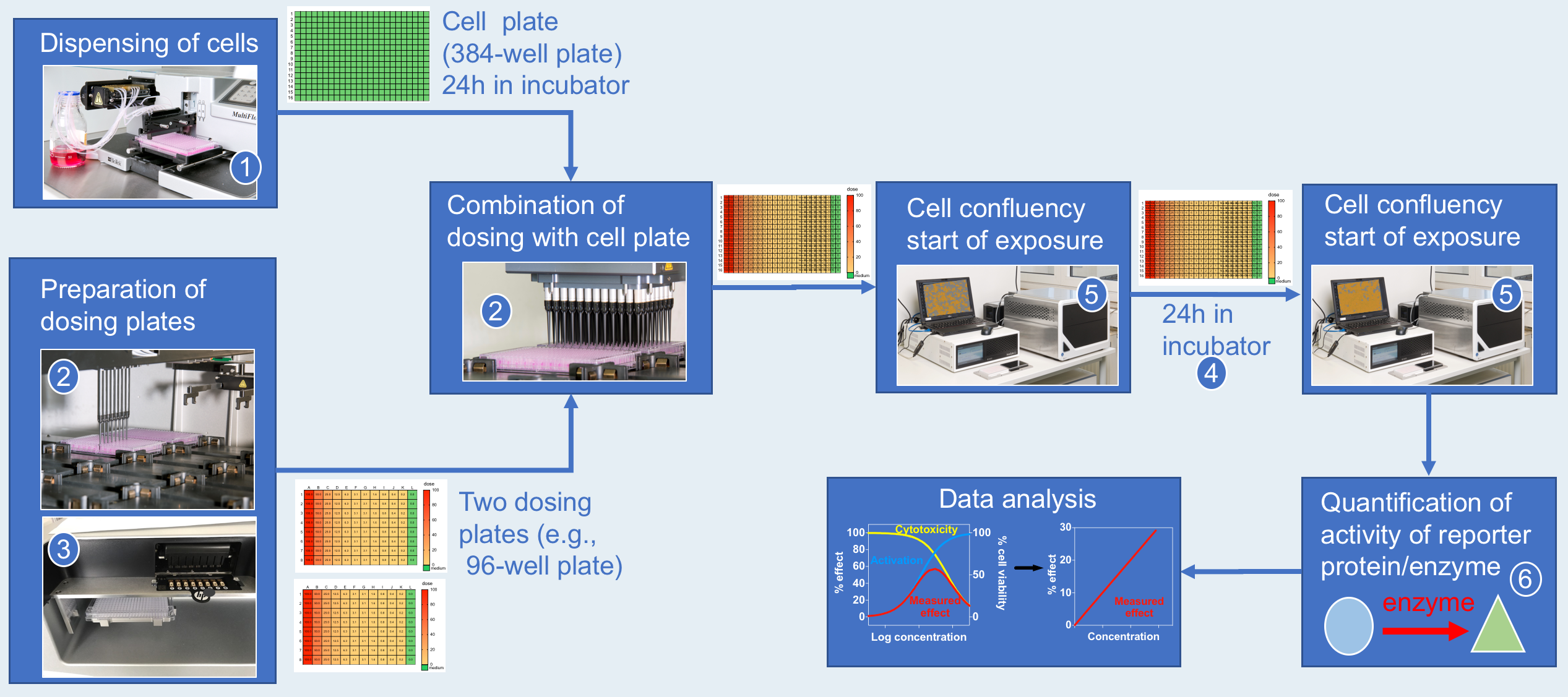#1 High-throughput bioassays with mammalian cells

The CITEpro module #1 “High-throughput bioassays with mammalian cell” is used for the testing of single chemicals, mixtures and environmental samples. A Hamilton STAR pipetting unit is used to prepare solvent free dilutions of environmental samples and extracts in 96-well doing plates.
Alternatively for pipetting solvent stocks of single chemicals, a dispenser based on inkjet technology allows the pipetting of small volumes of DMSO stocks in any volume from 13 pL to 30 µL into cell assay medium with multiple injections allowing the preparation of mixtures into 96 well dosing plates. Aliquots of the content of these dosing plates are then transfer with a 96-pipette-head of the pipetting robot to a 384-well plate containing appropriate cells and cell numbers.
After dosing and after 24h incubation the cell confluency is quantified using an Incucyte Imaging system. For reporter gene activation measurements, appropriate substrates for the reporter enzyme are added and the response quantified with a plate reader (luminescence, fluorescence).
Application:
Assessment of reporter gene activation and cell viability in reporter gene assays.
Main components
- Dispenser for the fast dispensing of cells in 384 well plates
- Pipetting robot Hamilton Star
- Tecan D300 Dispenser
- CO2 Incubators
- Incucyte S3 system
- Plate reader Infinite M1000 pro
Literature references
König, M., Escher, B.I., Neale, P.A., Krauss, M., Hilscherová, K., Novák, J., Teodorović, I., Schulze, T., Seidensticker, S., Kamal Hashmi, M.A., Ahlheim, J. and Brack, W. (2017). Impact of untreated wastewater on a major European river evaluated with a combination of in vitro bioassays and chemical analysis. Environmental Pollution, 220: 1220-1230.
Nivala, J., Neale, P.A., Haasis, T., Kahl, S., König, M., Müller, R., Reemtsma, T., Schlichting, R. and Escher, B. (2018). Application of bioanalytical tools to evaluate treatment efficacy of conventional and intensified treatment wetlands. Environmental Science: Water Research & Technology, 4: 206-217.
Müller, M.E., Escher, B.I., Schwientek, M., Werneburg, M., Zarfl, C. and Zwiener, C. (2018). Combining in vitro reporter gene bioassays with chemical analysis to assess changes in the water quality along the Ammer River, Southwestern Germany. Environmental Science Europe, 30: 20.

